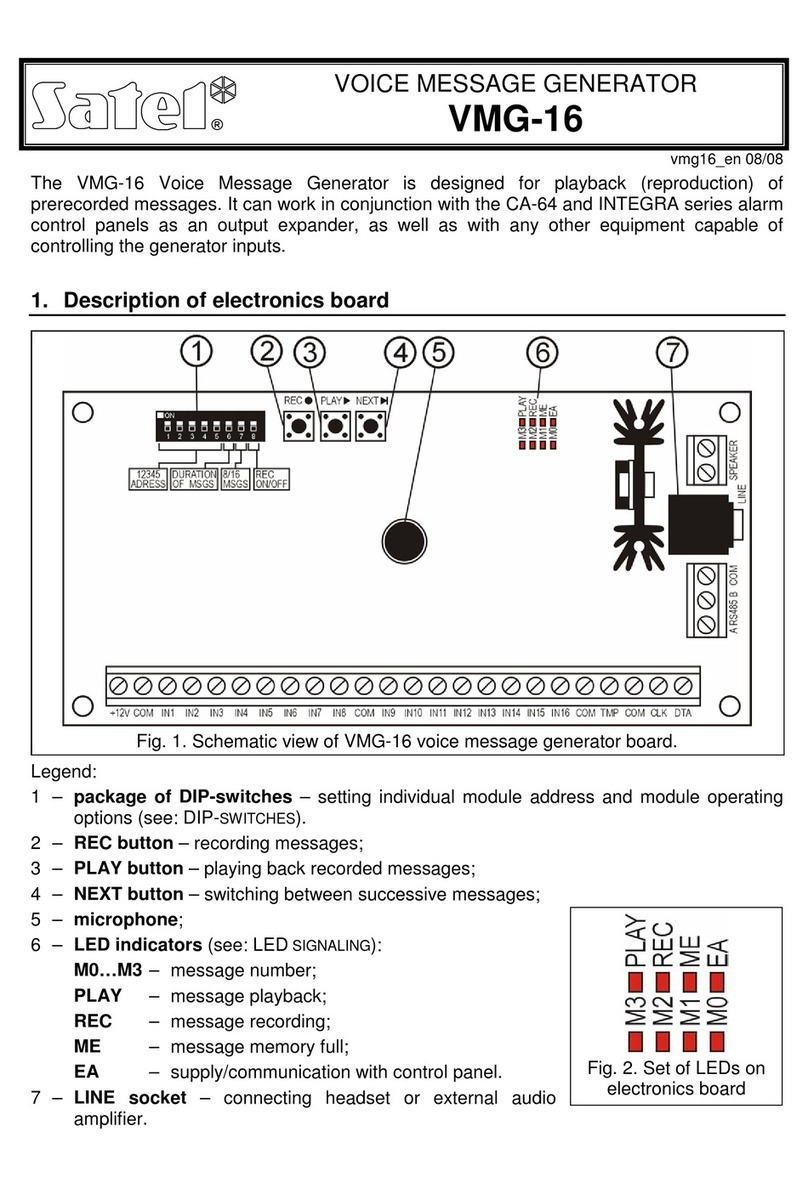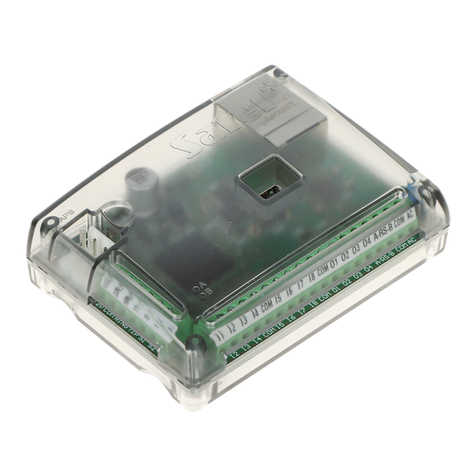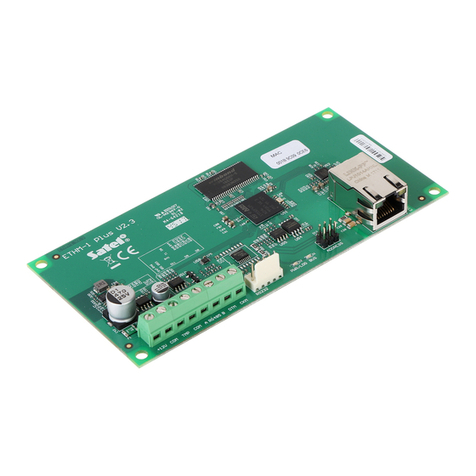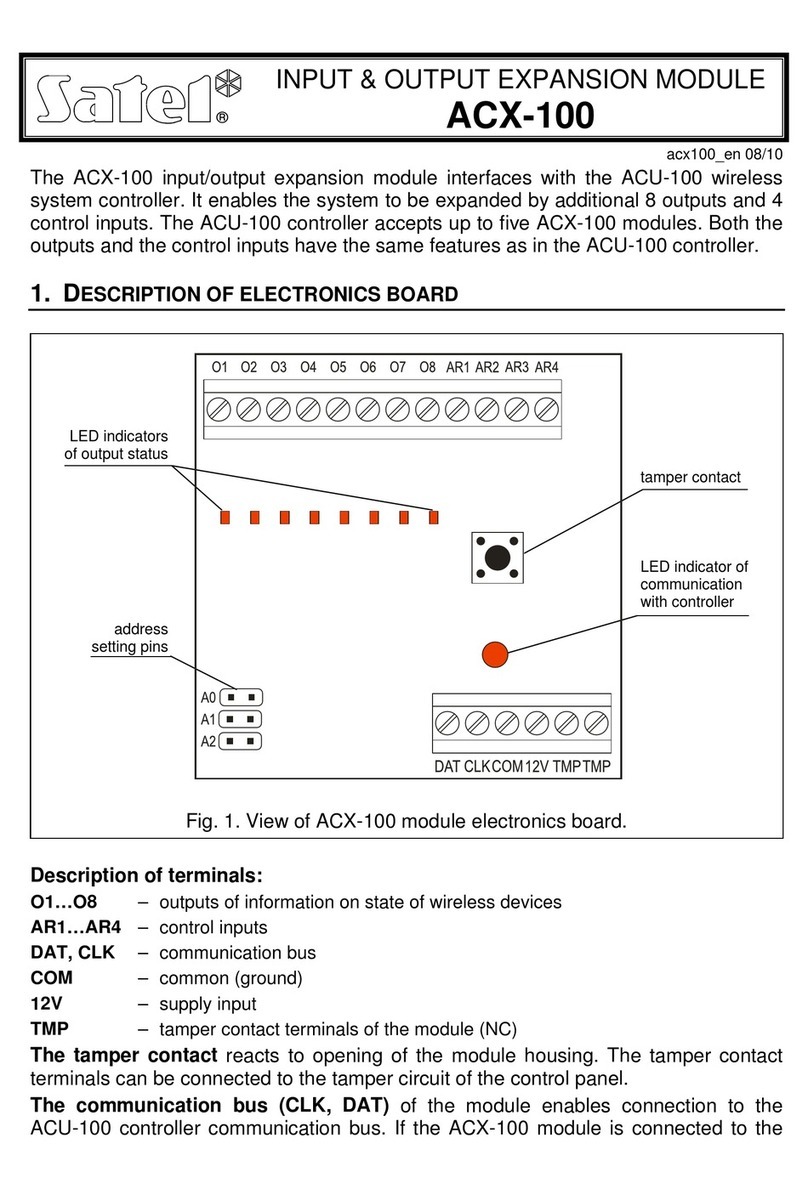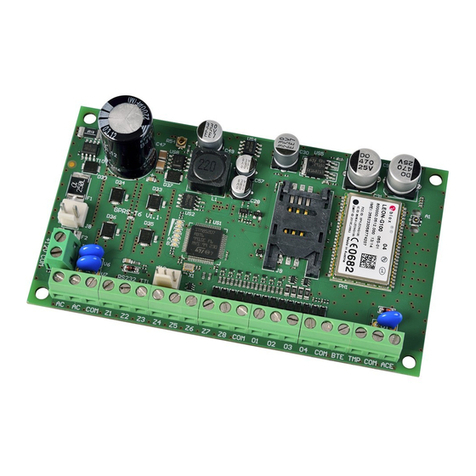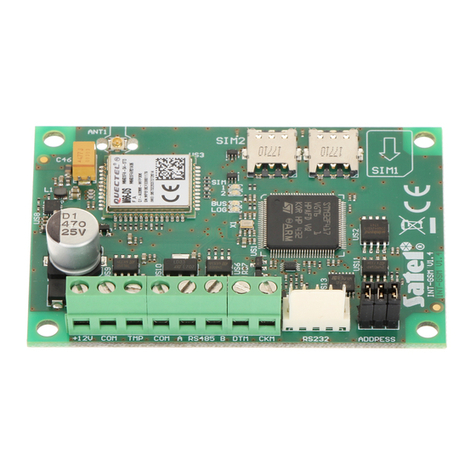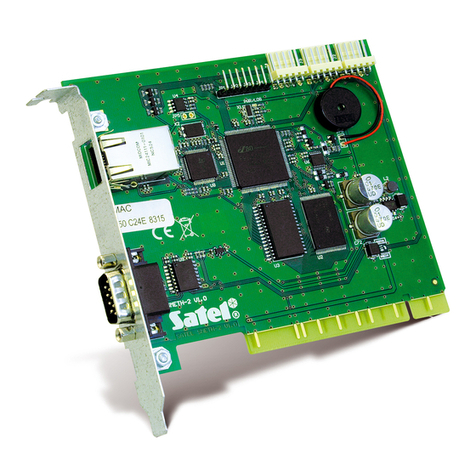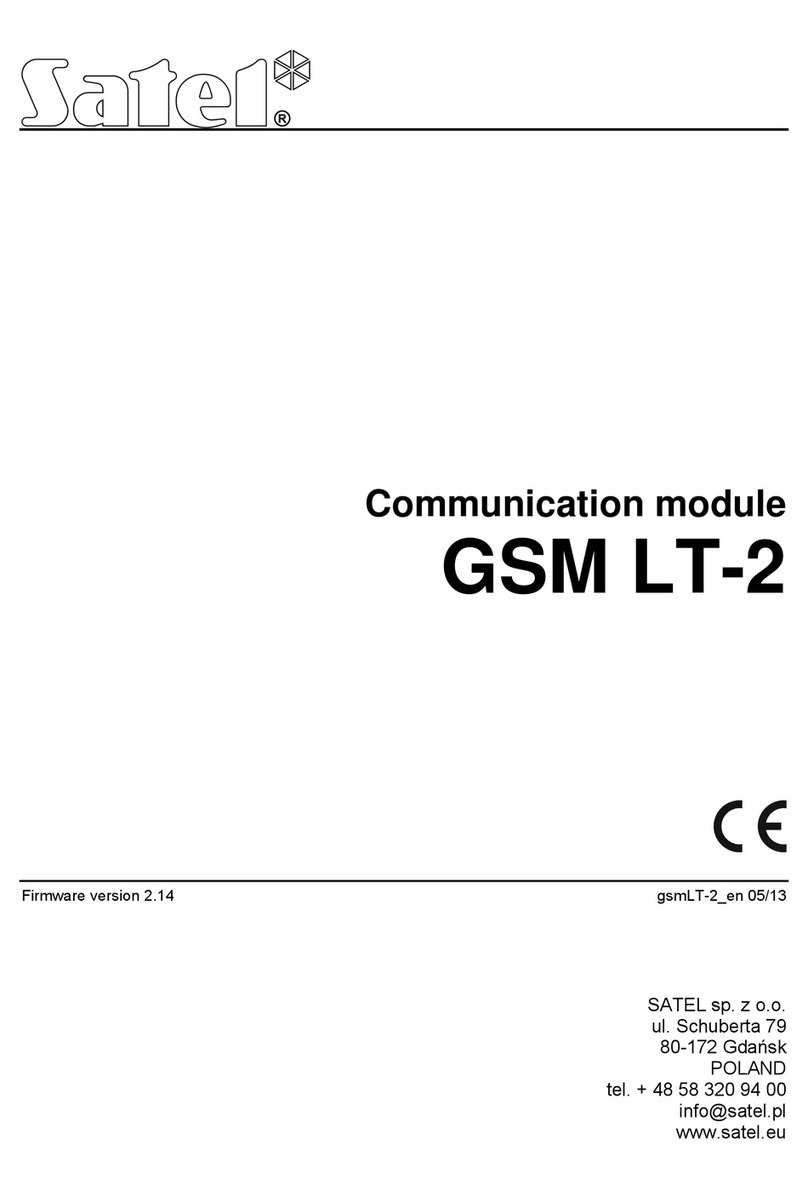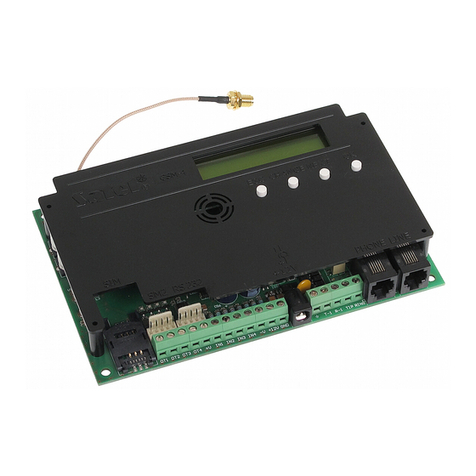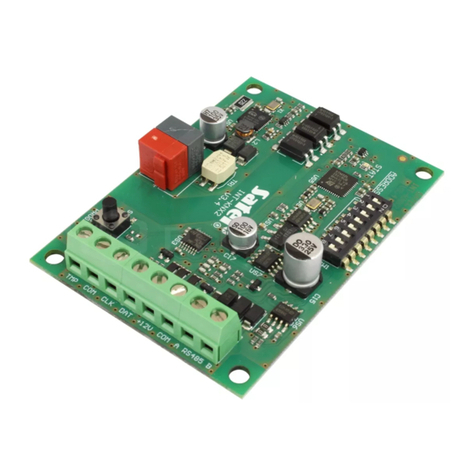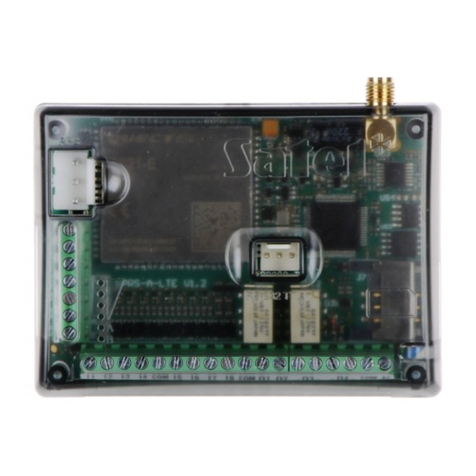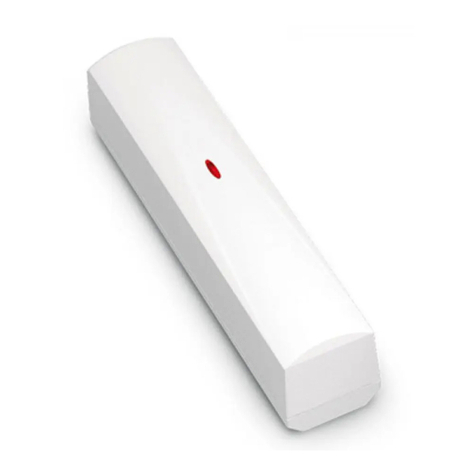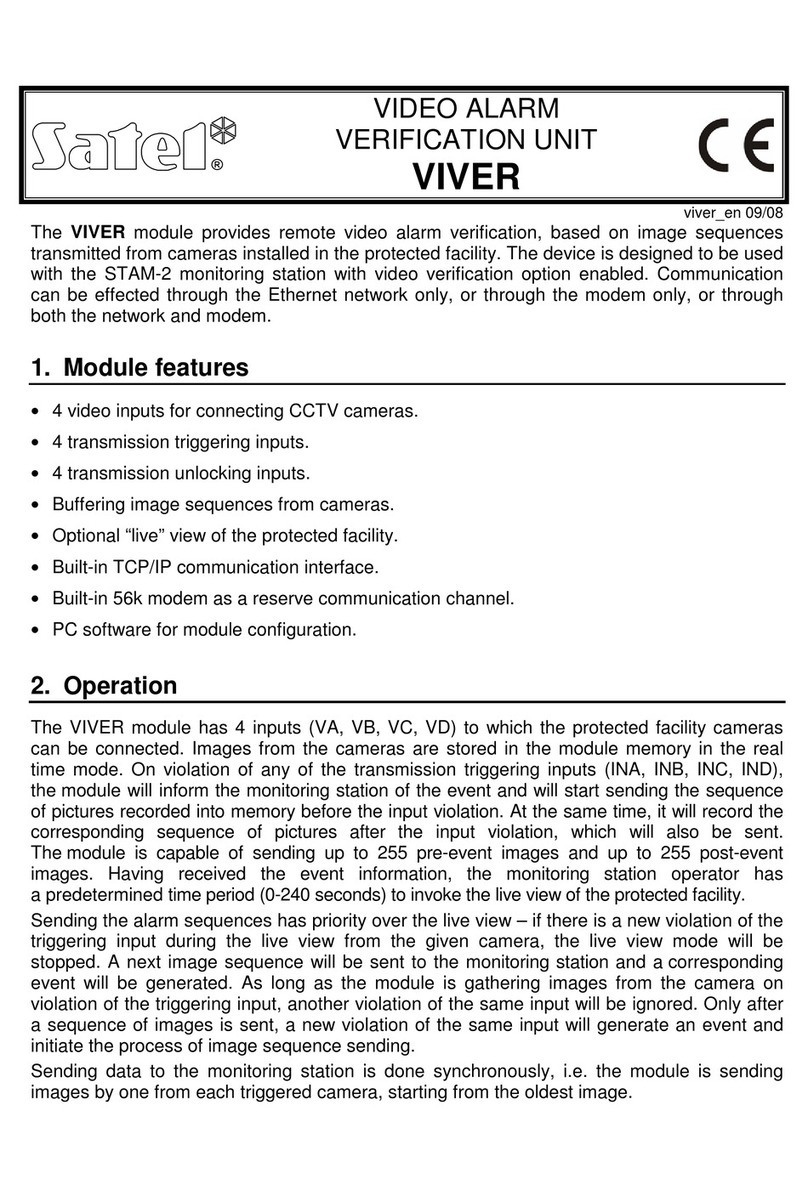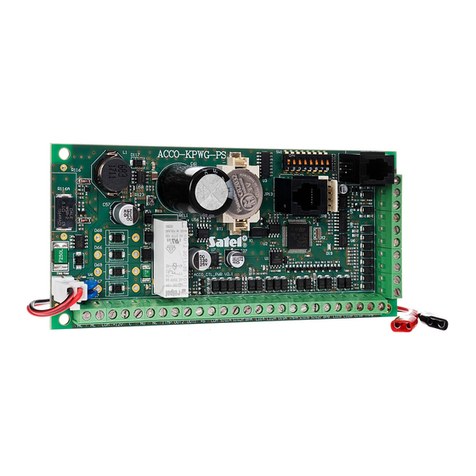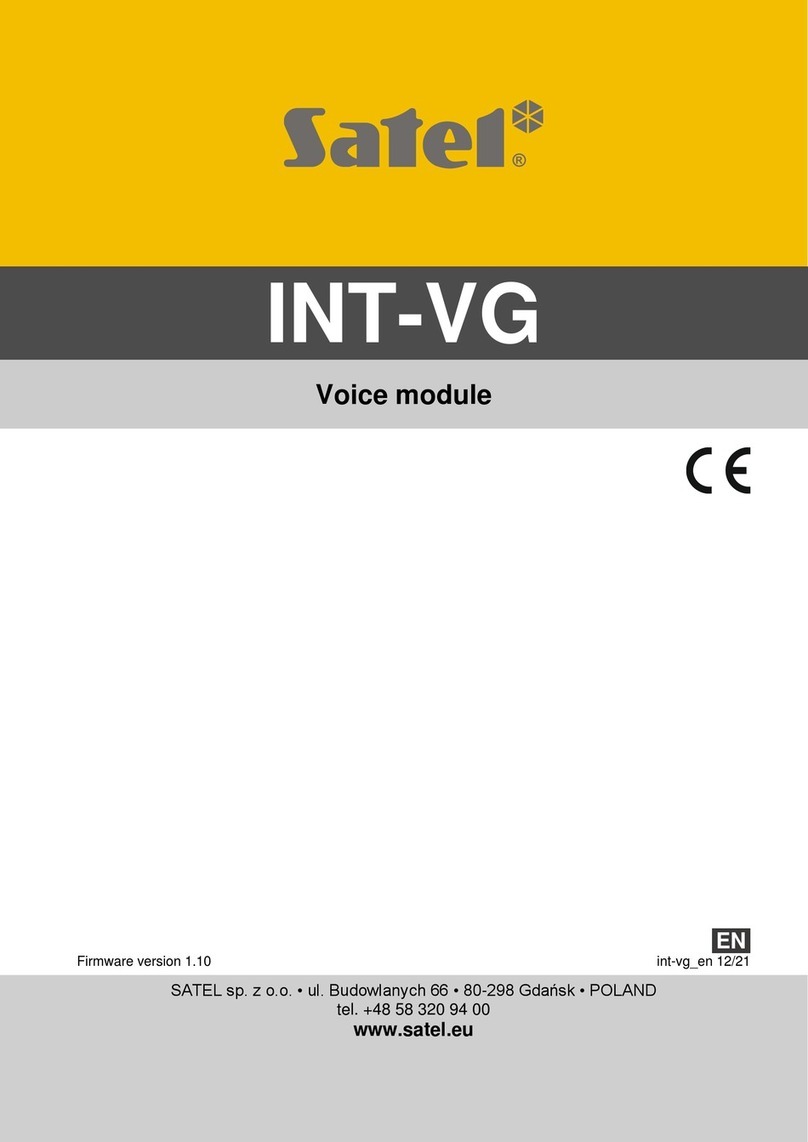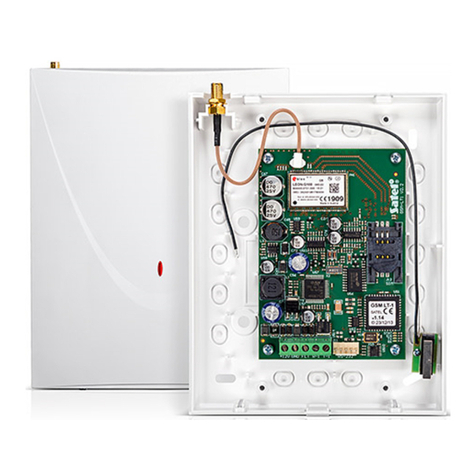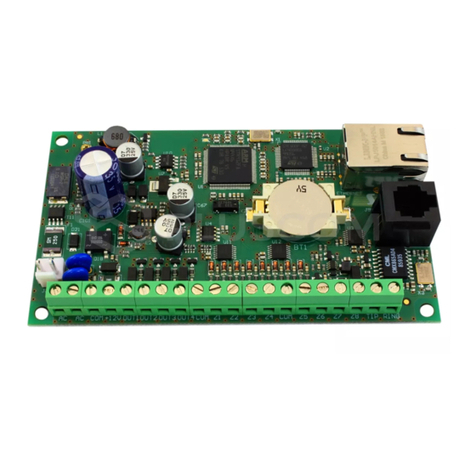
The below table presents the functions performed by the MST-1 module:
CODE DESCRIPTION
[0][#] End of connection with the control panel
[1][#] Checking the status of partition 1
[2][#] Checking the status of partition 2
[3][#] Checking the status of partition 3 (it relates to the CA-10 plus control panel)
[4][#] Checking the status of partition 4 (it relates to the CA-10 plus control panel)
[9][#] Checking zones status
[CODE][#] Arming/disarming, alarm clearing
[CODE][¼][4] Zones bypass
[CODE][¼][5] Silent arming
[CODE][¼][7] Controlling of the output of ”MONO switch” type
[CODE][¼][8] Controlling of the output of ”BI switch” type
The control is performed using DTMF signals of the telephone keyboard. To call the selected function
press sequentially telephone keys in accordance with the calling method as shown in the table.
Partition status signalling:
• three short beeps – partition disarmed;
• four short and one long beeps - partition armed.
Alarm in a partition or memory of an alarm are signalled with a series of short beeps (changing from
high to low) that last approx. 2,5 seconds directly after signals informing on partition status.
The function ”Checking zone status” can readout the information, which of keypad’s LEDs shine with a
steady light and which of them are blinking. During co-operation with CA-10 control panel the module
informs in accordance with the settings of service functions FS 12 do FS 15.
The indication of a zone of an armed partition means memory of an alarm triggered by this zone, while
the indication of a zone of a disarmed partition means violation of the zone. In the CA-6 control panel
the number of a diode relates to the number of a zone, while in the CA-10 plus control panel the installer
himself defines the numbers of zones to be indicated by LEDs of the keypad assigned to the partition
(such keypad needs to be connected to the control panel). It is possible to check the status of LEDs
numbered from 1 to 12.
The method of checking the zone status:
• After the first calling of the function [9][#], the module generates short beeps, the number of which is
equal to the lowest number of a shining LED. If none of LEDs shines, the module generates two
long beeps.
• The subsequent calling of the function [9][#] indicates the next LED, which is shining. The review
needs to be continued till hearing two long signals informing that there are no more LEDs shining.
The repeated calling the function (after two long signals) will restart the review of zone status.
• In order to check the zones status in the control panel CA-10 plus, first it is necessary to check the
status of one of zones through calling an appropriate function: ([1][#]; [2][#]; [3][#] or [4][#]), and
afterwards to check the status of its zones with the function [9][#]. Each of zones needs to be called
separately.
User functions, protected with a code, are performed in an identical way as during using the control
panel’s keypad (see description in the user manual). Acoustic signalling is identical with signalling of the
keypad. To go into the mode of control of other partitions in CA-10 plus press [1][#]; [2][#]; [3][#] or
[4][#].
The performance of the remaining user functions, functions of ”hold down” type, partitions quick arming
and entering the service mode through the MST-1 module is blocked.
The function [0][#] breaks the phone connection. Similarly the control panel finishes the connection if for
30 seconds it doesn’t receive any DTMF signal from a telephone set.
SATEL sp. z o.o.
ul. Schuberta 79
80-172 Gdańsk
POLAND
tel. (+48 58) 320 94 00
www.satel.pl
Latest EC declaration of conformity
and product approval certificates can
be downloaded from our Web site
www.satel.pl
